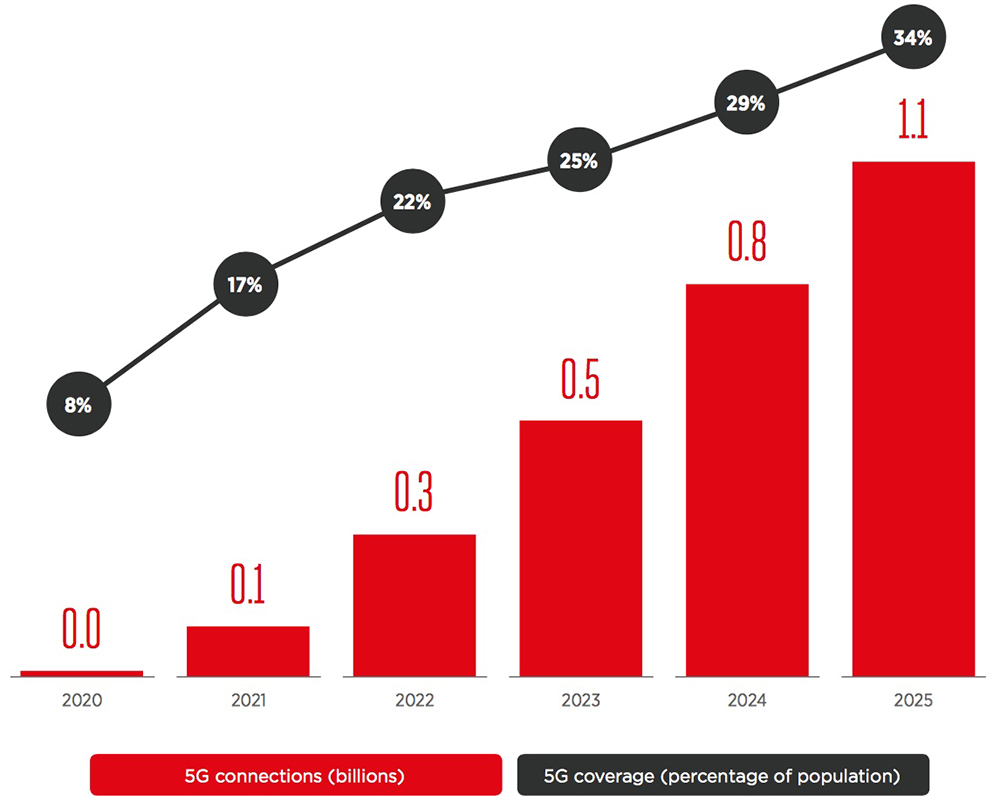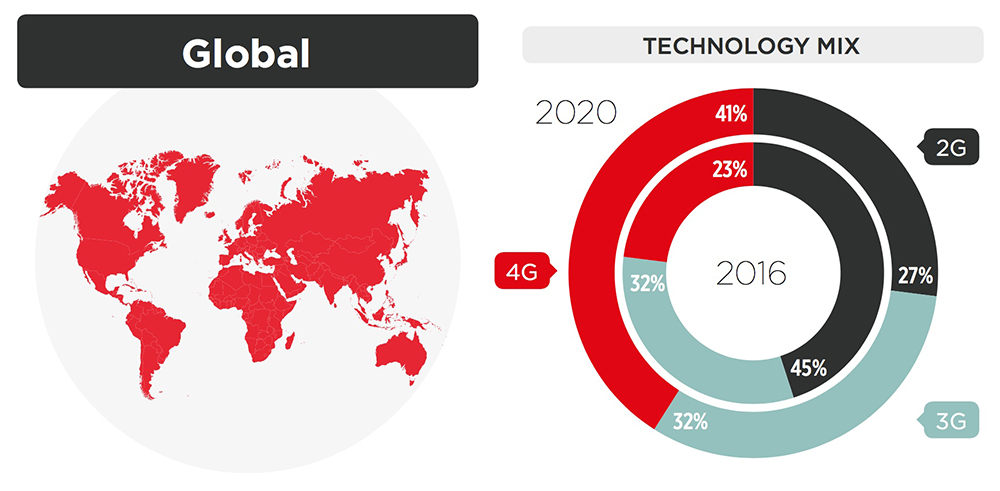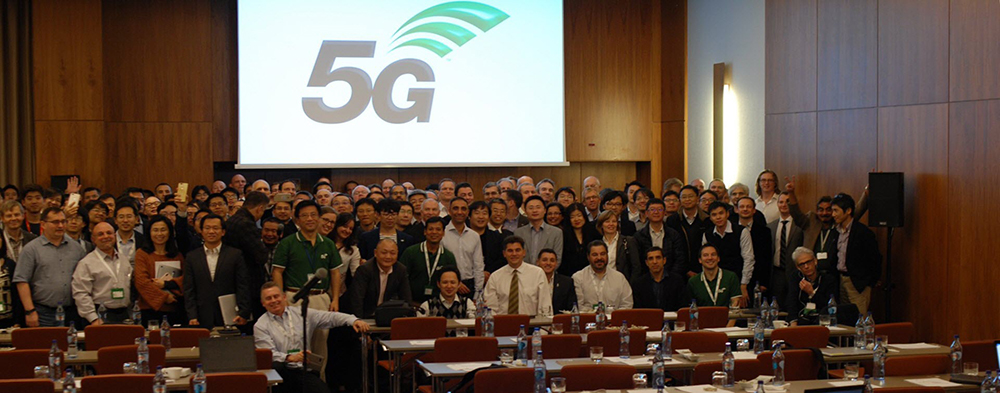5G. More than just a wireless upgrade.
5G is the hottest topic in the wireless industry these days, but as Ciena’s Brian Lavallee explains, it means a massive upgrade to wireline network infrastructure as well. That’s why today Ciena has unveiled new capabilities to help network operators prepare for 5G.
Wireless Dominates the News
Pre-5G trials, proofs of concept, and hero experiments have been in the news for over a year, and rightfully so. The expected 5G performance leaps over existing 4G LTE is very aggressive, and truly astounding. If we get close to the aspirational goals listed below in real-world use cases, I’ll be thoroughly impressed.
- Up to 100x higher user data rates
- Up to 100x more connected devices (mainly IoT, not humans)
- Up to 10x lower latency
- Up to 1000x more data volumes
Most news coverage has been related to testing of new 5G wireless technologies, such as flexible waveforms, Massive Multiple-Input & Multiple-Output (MIMO) antenna arrays, millimeter wave propagation, flexible codecs, new frequency bands, beamforming, and beam-tracking. This makes perfect sense, as the first parts of existing mobile networks to be upgraded will be in the Radio Access Network (RAN).
5G New Radios (NR) will be installed in locations already housing 2G, 3G, and/or 4G radios and antennas. However, before wide-scale 5G NR deployments start, wireless vendors and Mobile Network Operators (MNO) alike must be confident the new wireless technologies work reliably and as per specification. The easiest way to achieve this critical stage is to attach 5G NRs to existing wireline network infrastructure already serving previous generations of wireless technology. Once 5G NR technology is proven, wide-scale deployments will commence, and with great vigor. As a proof point, the GSMA states that “5G networks are forecast to cover around a third of the global population by 2025, with adoption reaching 1.1 billion connections”.

Figure 1: 5G Adoption forecast from 2020-2025 (source:GSMA)
5G New Radio (NR) Non-Standalone (NSA) Standard Approved
Last December in Lisbon (Portugal), a momentous 5G milestone was achieved. The 5G NR NSA standard was approved to officially kick off the standards-based 5G era, and the associated arms race among vendors selling gear and MNOs selling services. This milestone will lead to “standards-based” 5G trials, proofs of concept, and hero experiments that will accelerate throughout 2018, as evidenced by a “group announcement from multiple Tier 1 network operators and vendors stating that the completion of the first 5G NR standard has set the stage for the global mobile industry to start full-scale development of 5G NR for large-scale trials and commercial deployments as early as in 2019”. In short, the 5G arms race has officially begun.
Wireline Infrastructure Is the Mobile Network Glue
As Randall Stephenson, CEO of AT&T, so eloquently stated, “The more wireless we become, the more fixed-line dependent we become. Meaning, as data requirements on these mobile networks grow, you have to get a denser and denser and denser cell site grid. Denser, denser, denser means more cell sites. All of those cell sites connected by fiber and Ethernet. Basically, all you’re doing is building this big massive fixed-line network with wireless antennas hanging on the end of it.” Very well said, I must say.
I believe Randall’s viewpoint concisely sums up the migration path towards 5G: a massive wireline upgrade with new 5G NRs deployed at the wireline network edge. Of course, it’s far more complicated than simply installing new 5G NRs on towers, buildings, and various types of city furniture. For example, RF coverage planning is required to know exactly where 5G NRs should be installed, where new small cells will have to be deployed, and so on, that can only be optimized once the technology is thoroughly tested under real-world conditions. However, the essence is correct, as the wireline network “glues” together multiple generations of wireless technology to and from data centers, where accessed content resides, and everything in between.
As 5G NR wireless technology is tested in the real-world and is proven sufficiently reliable, massive deployments can commence. Once this starts, scaling of the common wireline infrastructure is also required, especially as more 5G NRs are attached to it, if the exciting 5G network performance gains mentioned above are to be realized.
Multiple Generations Living in Harmony for Years to Come
5G was not intended to outright replace past generations of mobile network technology, such as 4G and all its variants (older LTE and newer LTE-A and LTE-Pro). 5G is intended to coexist alongside 4G and will likely coexist alongside 3G and even 2G in many locations, as newer generations never really completely replaced older generations. You can see this yourself as you travel and notice your smartphone jumping between 2G, 3G, and 4G networks depending where you’re located at a given point in time. This means that the wireline network that supports past generations of mobile technology must also support 5G as well.

Figure 2: Coexistence of multiple generation of mobile technology (source:GSMA)
5G NR NSA equipment will be “attached” to existing wireline networks currently serving 2G, 3G, and/or 4G technologies. This allows 5G NRs to be rapidly deployed and tested on a sufficiently wide-scale to prove in the new wireless technology, without having to upgrade the existing wireline network. This is genius when you think of it. As 5G NR wireless technology is tested in the real-world and is proven sufficiently reliable, massive deployments can commence. Once this starts, scaling of the common wireline infrastructure is also required, especially as more 5G NRs are attached to it, if the exciting 5G network performance gains mentioned above are to be realized. If the wireline side doesn’t maintain pace with the wireless side, the full promise of 5G end-to-end network performance required by new 5G use cases simply cannot be realized.
No One Vendor Is the Best at Everything – No one
The migration to 5G will be a multi-year journey fraught with challenges and opportunities, but what past mobile generation wasn’t, right? We’ve learned a lot from past upgrades, which can and will be applied to 5G. What the industry has also learned is that no one vendor can credibly state they offer the best technology across both wireless and wireless network domains – no one vendor can – and is precisely why “open” has become an unstoppable juggernaut pervading all parts of the global Internet, and the mobile network will not be spared, and it shouldn’t be. Open enables greater choice and the ability to build best-in-breed networks.
What the industry has also learned is that no one vendor can credibly state they offer the best technology across both wireless and wireless network domains – no one vendor can – and is precisely why “open” has become an unstoppable juggernaut.
The (often unspoken) reality is that some vendors have better technology than others. However, as long as networks are designed based upon an open network mindset and open standards, mobile operators can pick-and-choose exactly what technology they want, where they want it, and when they want it. Simply put, to build a best-in-breed end-to-end network, multiple vendors and their wares must work together and coexist, just as 5G must work alongside previous generations of mobile technology over a common wireline network.
Introducing Ciena 5G Network Solutions
Today, we've introduced Ciena 5G Network Solutions that offer mobile operators multiple ways to scale their existing wireline infrastructure to support not only future 5G, but previous generations of mobile technology as well. The fact is, 4G, and even 2G and 3G in many parts of the world, simply isn’t going away anytime soon. Multiple generations of mobile technology will coexist for years to come, and we recognize this fact. This is precisely why we enable MNOs to pick-and-choose network building blocks in a flexible manner by embracing openness, resulting in best-in-breed mobile networks and highly differentiated MNO services.
Visit Us at Mobile Word Congress 2018!
Want to find out more about our 5G Network Solutions and discuss the future of mobile networks? Then visit us at Mobile World Congress in Hall 2, Stand 2J51. See you in Barcelona!

Pictured above, members of SA2, the 3GPP architecture working group, in Lisbon, Portugal, during the official completion of the 5G system architecture standard in December. Picture courtesy @GPPLive.





